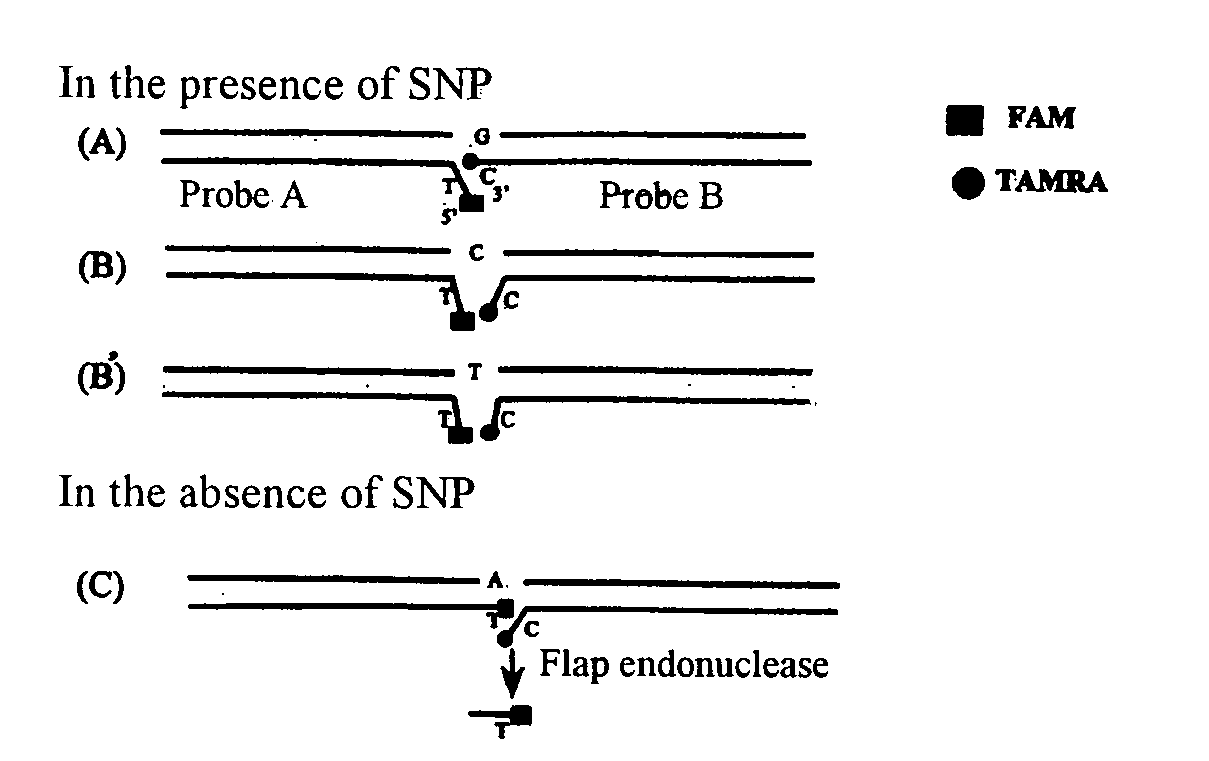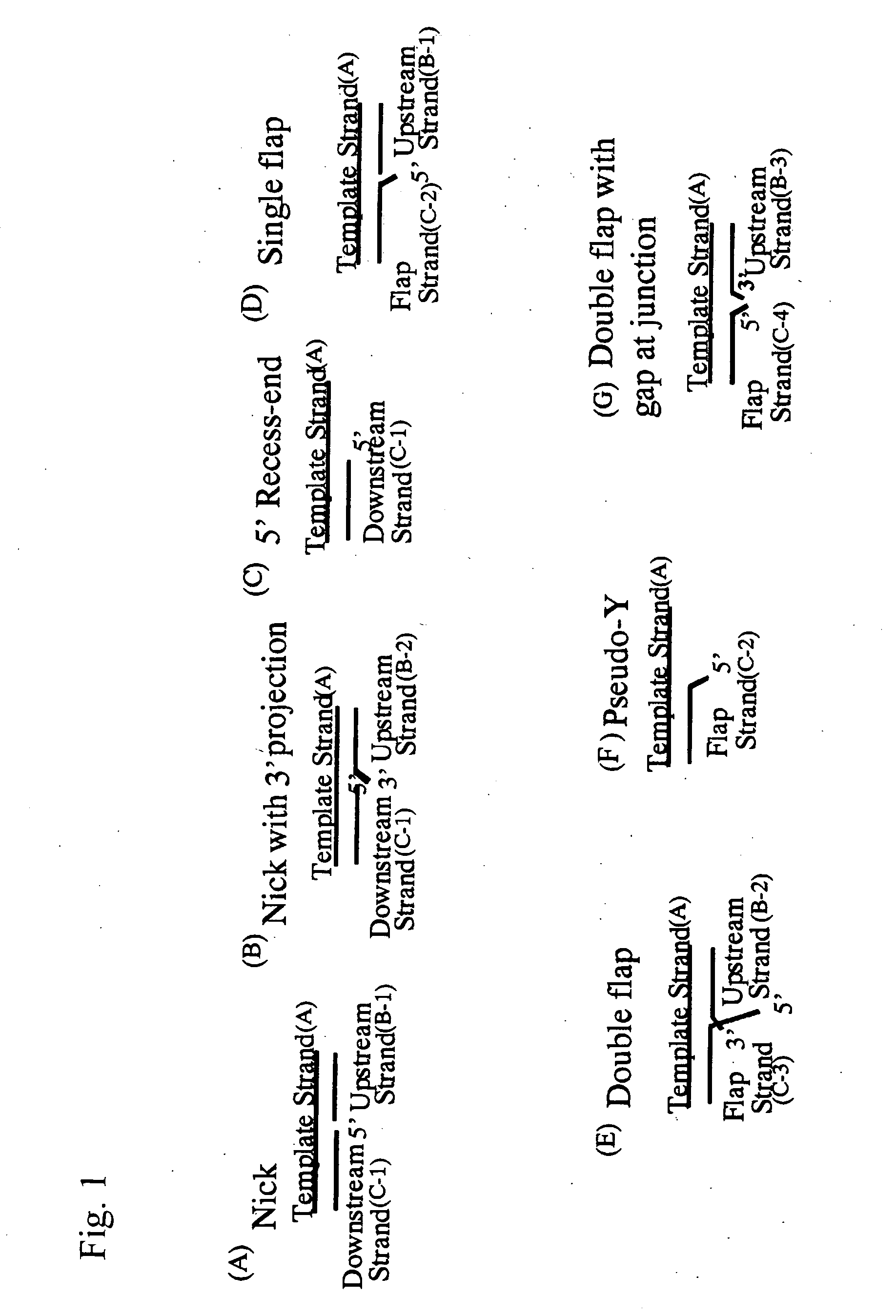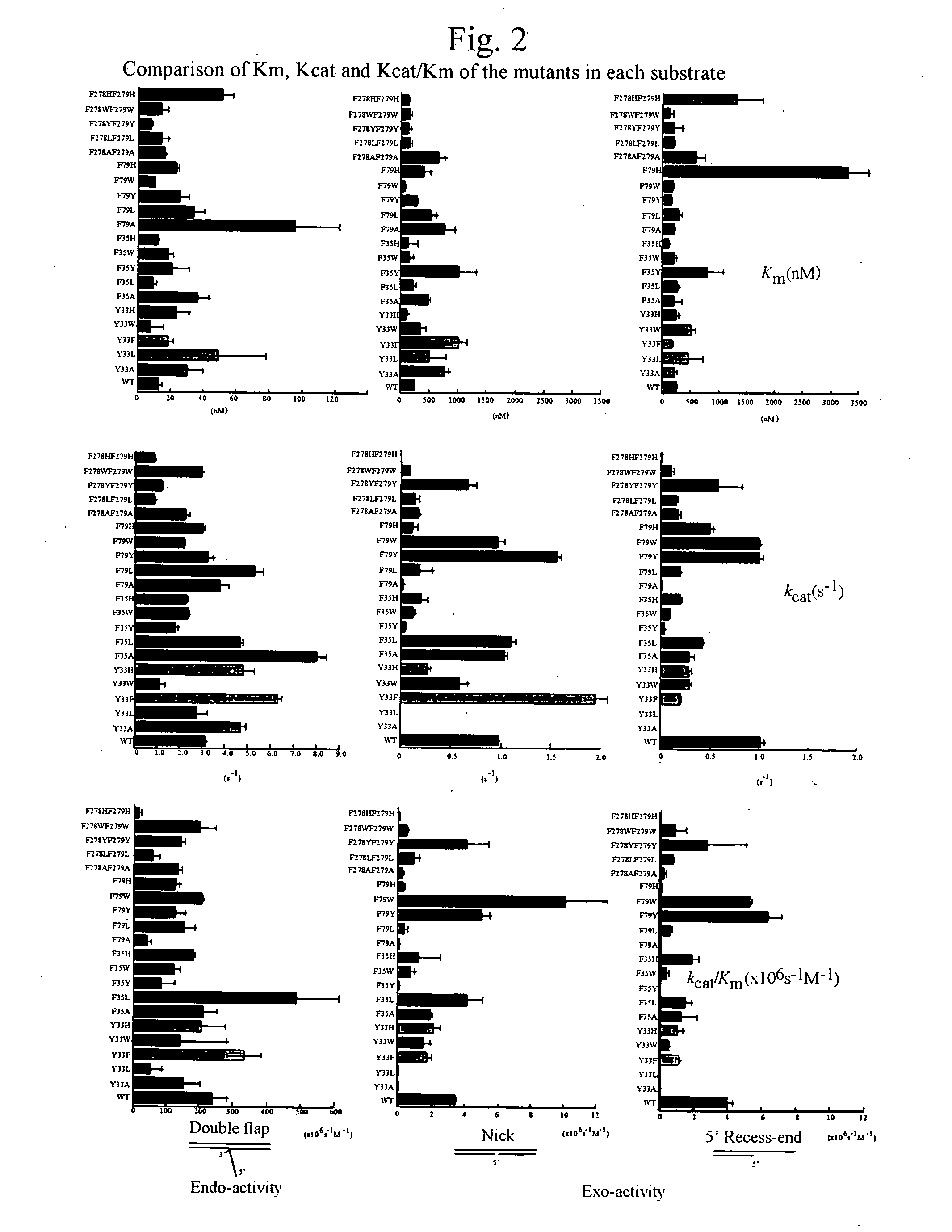Flap Endonuclease Mutants
a technology of endonuclease and flap, which is applied in the field of flap endonuclease mutants, can solve the problems of insufficient reliability, and achieve the effect of accurate and sensitiv
- Summary
- Abstract
- Description
- Claims
- Application Information
AI Technical Summary
Benefits of technology
Problems solved by technology
Method used
Image
Examples
example 1
Preparation of a Mutant
[0116]The gene of mutant Y33A was prepared as follows.
[0117]Common primers and the primers which have mutation (primers for preparation of Y33A) were synthesized as shown below. First, PCR (after heating for five minutes at 96° C., DNA polymerase was added, then a cycle of 96° C. for 1 minute, 55° C. for 2 minutes and 70° C. for 2 minutes was repeated 25 times) was performed using a PET11a plasmid containing the gene (SEQ ID No. 1) encoding the wild type flap endonuclease-1 (FEN-1) from Pyrococcus horikoshii as the template, and using the FEN-U primer containing a restriction site (NdeI) and the Y33A-R primer which has mutation, and the FEN-R primer containing a restriction site (XhoI) and the Y33A-U primer which has mutation, to prepare two fragments having mutation, then PCR (using the same conditions as above) was performed with these fragments as templates using the FEN-U and FEN-R primers to introduce mutations, and restriction sites on both sides of the ...
example 2
Expression of Recombinant Gene
[0122]Competent cells of E. coli BL 21 (DE3) (manufactured by Novagen) were thawed, 0.1 ml of the thawed competent cells was transferred into each of two Falcon tubes, 0.005 ml each of the solutions of the expression plasmids above was added, the mixture was kept on ice for 30 minutes, heat shock was applied at 42° C. for 30 seconds, 0.9 ml of SOC medium was added and the mixture was incubated at 37° C. for one hour with shaking.
[0123]An appropriate amount of the obtained culture was placed on a 2YT agar plate containing ampicillin and incubated at 37° C. overnight to obtain each transformant.
[0124]Each of these transformants was incubated in 2YT medium (2 liters) containing ampicillin at 37° C. until absorbance at 660 nm reached 0.4, and then IPTG (isopropyl-b-D-thiogalactopyranoside) was added at 1 mM and the mixture was incubated at 30° C. for 4 hours. After incubation, cells were harvested by centrifugal separation (6,000 rpm, 20 minutes).
example 3
Purification of Mutant Enzymes
[0125]The cells collected were subjected to freeze-thawing at −20° C., respectively and two volumes of 50 mM Tris-HCl buffer (pH 8.0) as compared to the cell were added to obtain a suspension. Each of the resultant suspensions was heated at 85° C. for 30 minutes, centrifuged (11,000 rpm, 20 minutes), adsorbed to a HiTrapSP (manufactured by Pharmacia) column, and eluted by NaCl concentration gradient to obtain active fractions. These fractions represented solutions of purified Y33A, Y33L, F35Y, F79A, F79H, F278AF279A, Y33AF35A, and Y33AF79A.
PUM
| Property | Measurement | Unit |
|---|---|---|
| pH | aaaaa | aaaaa |
| pH | aaaaa | aaaaa |
| molecular weight | aaaaa | aaaaa |
Abstract
Description
Claims
Application Information
 Login to View More
Login to View More - R&D
- Intellectual Property
- Life Sciences
- Materials
- Tech Scout
- Unparalleled Data Quality
- Higher Quality Content
- 60% Fewer Hallucinations
Browse by: Latest US Patents, China's latest patents, Technical Efficacy Thesaurus, Application Domain, Technology Topic, Popular Technical Reports.
© 2025 PatSnap. All rights reserved.Legal|Privacy policy|Modern Slavery Act Transparency Statement|Sitemap|About US| Contact US: help@patsnap.com



